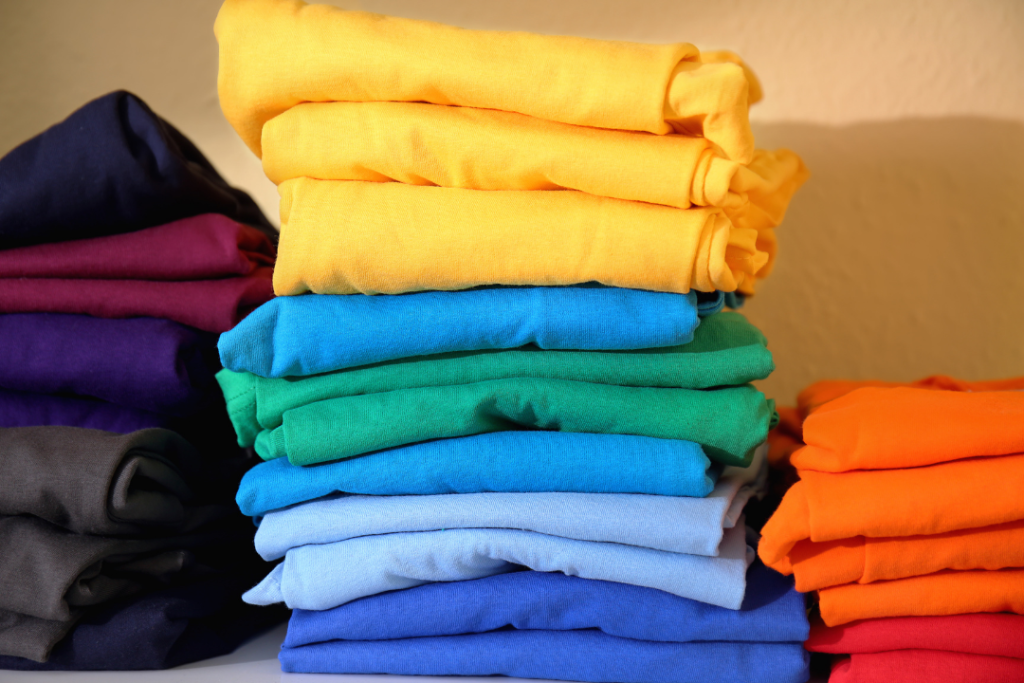
When considering the finest fabric for a screen printing project, 100 per cent cotton is hard to beat. It’s simple to work with and works well in most applications. Cotton is also less difficult to print on than other fabrics such as fleece, polyester, acrylic, and blended materials, making it ideal for screens.
The risk of bleeding and dye migration is reduced with cotton. Cotton, being a natural fibre with texture, readily absorbs ink as opposed to synthetic or polyester alternatives. Acrylic and polyester fabrics, for example, are less permeable than cotton, so the ink does not adhere as readily. Furthermore, many consumers like wearing garments that are made entirely of cotton. They’re a bit heavier than combinations but more breathable and hypoallergenic. What’s not to adore?
That said, screen printing on cotton isn’t flawless. There is a certain level of expertise needed to produce excellent results on cotton and guarantee a sharp, high-quality print. Here’s how to do it right every time:
Different types of cotton fabric vary considerably in quality. Any variables must be taken into account. For example, very thick cotton will absorb your ink and result in a faded design, but a tightly woven, thin cotton t-shirt will create a more opaque print.
You should also think about the many types of cotton fabrics that are accessible. Carded open-end cotton tees are the cheapest option, but they have a fuzzy and uneven appearance up close. In contrast, 100% ring-spun and combed cotton tees are smoother and softer.
Finally, select the colour of your cloth with care. Some greens, blues, and reds don’t mix well with discharge ink, so pick a light-coloured shirt to avoid any bright hues in your design being influenced by dark shirt colour.
The most essential component of producing a high-quality print is your artwork. As a result, it must be carefully planned with screen printing in mind. Make sure there’s a clear distinction between your ink colour and the garment to encourage visibility and comprehension. Also, think about the size of your design. The thicker the cotton t-shirt feels because of the scale of the picture.
If possible, using a flat work surface while printing on a thin fabric, such as a 100% cotton t-shirt, will result in the best results. If there is a pocket on the garment you’re designing, plan the design around it. Printing over uneven areas or seams will result in design inconsistency and a gap where the screen’s ink missed the shirt because of irregularities in location.
Cotton is one of the most versatile textiles available, and it can be used with just about any type of ink. Plastisol ink, which is the most commonly employed garment ink in the United States, is a wonderful option. Water-based ink produces a softer print than plastisol and is excellent for cotton. Finally, discharge ink is only effective on 100 per cent cotton garments and is an excellent choice for dark fabric hues. It works by removing the dye from the garment and replacing it with pigment paint instead of dye. This allows you to create darker coloured clothing without having to use under basing.
Registration difficulties can be a serious problem no matter how skilled you are when screen printing on cotton. Check each screen separately to identify issues such as alignment problems, low-tension screens, and an unleveled platen. And, always register the screens together with registration marks to ensure they line up properly.
Whether you’re printing on cotton, silk, or even paper, your off-contact distance will be different. The space between the screen and the garment must be changed in order to ensure a sharp print – about 1/8″ for a basic cotton t-shirt.
Cotton has a (well-deserved) reputation for being adaptable and simple to work with, but before printing an entire order, always do a trial run. This will allow you to make modifications as you go – and avoid making a costly mistakes.